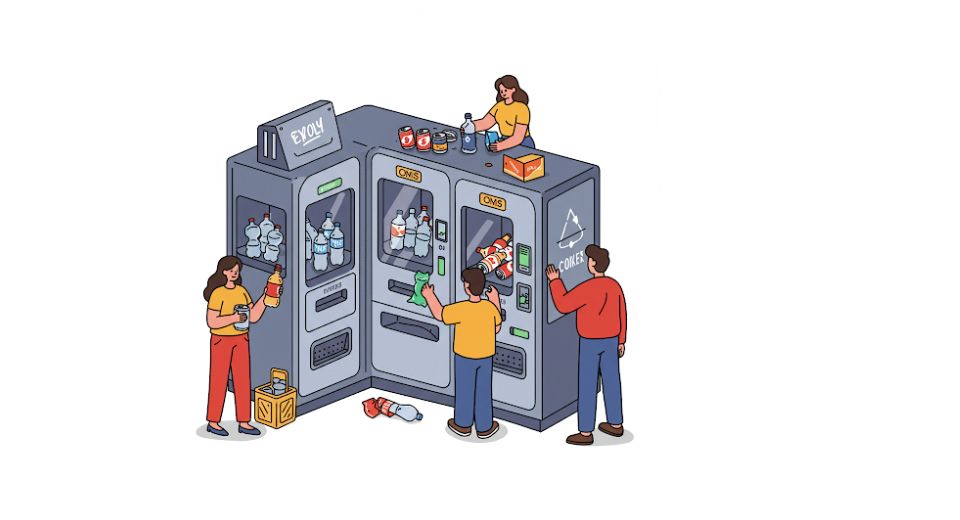
Apr 24, 2025

A recent overview published by Metastat Insight points towards changing profiles in the Global Reverse Vending Machine Market, while also examining how innovations, customer mentality, and systemic integration shape its present disposition. These machines, which sit mostly in public and commercial invite to rethink recycling approaches. Unlike the conventional waste collection, reverse vending machines are places where people return used containers-plastics bottles, aluminum cans-for a reward or credit. This transactional model of recycling creates an enhanced level of interaction between people and the recycling infrastructure, promoting a behavior shift real time and measurable.
Global Reverse Vending Machine market is estimated to reach $523.38 million in 2025 with a CAGR of 6.7% from 2025 to 2032.
The placing and functioning of reverse vending machines have permeated sharply into the commercial landscape, from mere experimentation into full-scale implementation across a variety of fields. Their presence now in transport hubs, retail shops, universities, and stadiums underlines their functions as both recycling vessels and engagement tools. Instant gratification is provided to users for returning a product-in-proposed redemption-voucher, digital credit, or even donation options. This feedback loop stands in stark contrast to traditional recycling's abstract nature, where the physicality of engagement adds interest and benefit to the modern waste management campaign strongly embedded with reverse vending machines.
The technology inside the machines serves the purpose of accepting containers and much more. When a container is inserted into the machine, a host of material recognition systems determine whether the object corresponds to the acceptance criteria in terms of the type of material, shape, and bar code. Such systems will assist in recycling as they make sure that materials are separated correctly at the source. Some sophisticated models are capable of compacting accepted containers so as to better facilitate storage and transport. The use of these features shows how thought-out the system is regarding waste collection, combining software intelligence with actual hardware designs.
The specific design of user interfaces would be another focus applied with equal care. Instructions have been clearly written, with screens that respond, and interfaces that are easy to understand and use, allowing a range of people from schoolchildren to the elderly to operate the machines. A fundamental aspect of their spread is that, being physically easy to use, they lower barriers to participation in waste sorting and disposal. Operating these machines does not demand any prior knowledge and said participation shall, therefore, elevate. The focus then shifts away from the interaction toward the result: actual gains such as contributing to a cleaner environment, receiving a free gift, or the donation of funds to a worthy cause.
The soaring demand for global reverse vending machines has also activated the collaboration of public bodies and private enterprises. Municipalities, retail chains, and environmental groups have joined forces to enhance their acceptance by making the machines focal points for awareness campaigns and recycling drives. These collaborations often portray a common intention to reduce landfill usage and increase material reuse, from which reverse vending machines have given a tangible and measurable platform to work from. Each machine caters to hundreds or thousands of users, increasing the cumulative impact, providing valuable data and insight on recycling behaviors that were once difficult to capture.
Logistics surrounding machine operations have changed with time. Maintenance schedules, collection frequencies, and integration with backend databases are being optimized to ensure minimal disruption and maximum efficiency. Already, alert systems have instigated service calls to fix the machines whenever they fill up or develop faults so that downtime is not prolonged. Such logistic management tools, with real-time updates, enable the operators to coordinate response actions among sites. This behind-the-scenes infrastructure helps to ensure that these machines enjoy functionality and reliability, which are essential to instilling user trust and maintaining regular engagement.
Some reverse vending machines are also interfaced with a mobile application so users can track their deposits and gain points while also participating in wider environmental initiatives. This digital layer takes the interaction outside of the realms of the immediate transaction and fosters a sense of continuum and community around the recycling practice. Gamification, loyalty, and social share features keep users engaged in the whole experience, turning what otherwise would have been a simple act of recycling into something entertaining where one could spend endless hours. The perspective shift from a need to an opportunity approach has been paramount in the growing deployment of reverse vending machines in the public realm.
The styling of these machines is one of the considerations that has undergone a thoughtful evolution in design. These aren't just utilitarian boxes crammed in a corner anymore—many feature sleek designs, brand integrations, and interactive touch screens displaying educational content or advertisements. This evolution has allowed for their acceptance in high-traffic settings, matching the aesthetics of retail and hospitality. Instead of being relegated to the status of trash cans, they are striking, purposeful installations that ask to be engaged with.
According to a new report published by Metastat Insight, the Global Reverse Vending Machine Market is actively changing ways in which people practice sustainability with technology and convenience. While demand is increasing in various settings, the user experience in addition to operational support for reverse vending machines is undergoing improvement.
Drop us an email at:
Call us on:
+1 214 613 5758
+91 73850 57479